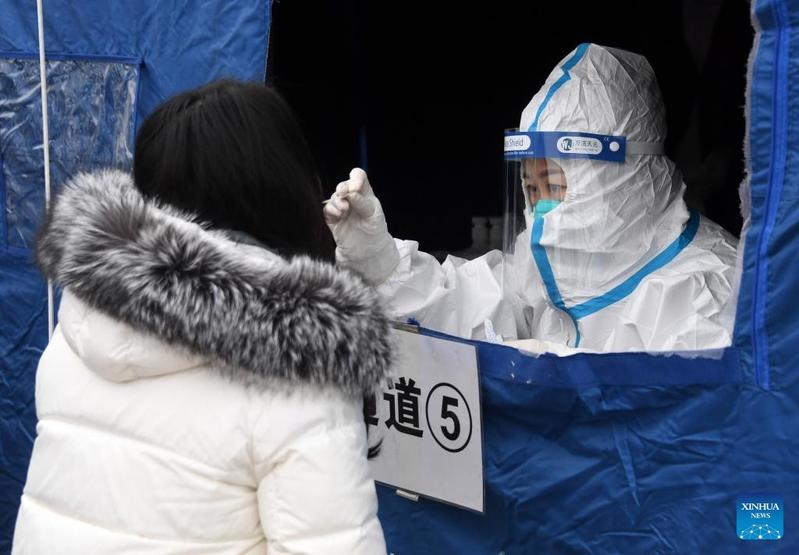 A medical worker takes a swab sample from a resident at a COVID-19 testing site in Haidian district in Beijing, Jan 24, 2022. (PHOTO / XINHUA)
A medical worker takes a swab sample from a resident at a COVID-19 testing site in Haidian district in Beijing, Jan 24, 2022. (PHOTO / XINHUA)
Given the numbers of infections, at around 100,500, and related deaths, at around 4,600, recorded over the past more than two years, and the relatively swift resumption of economic activities, China's fight against the COVID-19 pandemic should be considered successful. Especially when viewed in relation to the situation elsewhere.
More than 354 million people have been infected with the novel coronavirus globally and the disease has claimed over 5.6 million lives, while devastating the world economy.
The dynamic prevention and control measures China has adopted, including lockdowns, mass testing and contact tracing, have kept the number of infections and deaths low while keeping the country's economic activities and people's livelihoods basically on a normal track, albeit with some inconvenience caused to local residents because of a sometimes rushed response by health officials in some COVID 19-hit places due to either mismanagement or a lack of capability.
But the fact that China's economy expanded 8.1 percent last year points to the well-coordinated work the government has done to maintain steady economic momentum while keeping the virus generally at bay.
Thus it is strange and even incomprehensible that some media outlets in the West have pointed an accusing finger at China for its efforts to try to curb the spread of the virus, describing the country as being out of step with the rest of the world while playing a "lonely game of COVID whack-a-hamster". The New York Times even called China's COVID-19 policy "a pandemic waiting to happen" because it has left the country wholly "unprepared for what will become endemic COVID".
China's way of dealing with the pandemic may not be necessarily applicable or even feasible in other countries due to their different political systems and social conditions. Countries must consider their own realities and devise anti-virus policies that best suit their own situations; there is no one-size-fits-all approach.
Yet what these Western media have failed to mention is the relative ease at which the country found itself just months ago when the more transmissible Omicron variant was first detected, which forced countries around the world to scramble to impose travel bans to stem its spread.
Given that much still remains unknown about the variant and the fact that more variants might emerge in the days to come, maintaining its dynamic response to any infections while continuing to explore new ways to control the spread of the virus is the best option for China, especially with the Beijing 2022 Winter Olympic Games scheduled to start on Feb 4.
In the face of this unprecedented challenge to public health, the most pressing task that nations face is how to narrow the immunity gap around the world by pooling their wisdom and medical resources in the spirit of unity and mutual understanding.
Painting a doomsday picture of the situation in China just because it has a different, and more effective, way of dealing with the coronavirus is meanly conjectural, and obviously does not serve that purpose.


